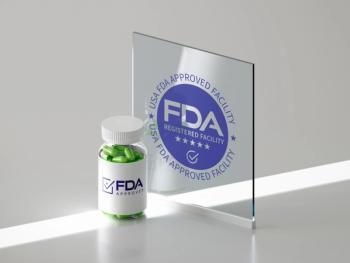
The American Urogynecologic Society action plan on diversity, equity, and inclusion

In this document, AUGS describes how the task force was organized and conducted the work to develop strategies focused on DEI.
Developed by the Diversity, Equity, and Inclusion Task Force
ABSTRACT
Abstract: The American Urogynecologic Society (AUGS) identified diversity, equity, and inclusion as the cornerstone of excellence in governance and operations. Although efforts to increase diversity of our membership have been ongoing for years, there had not previously been an adequate investment to ensure an inclusive climate that emphasizes equity across our volunteers and programs. In June 2020, the AUGS President, Dr Shawn Menefee, and Board of Directors called for a Presidential Task Force on Diversity, Equity, and Inclusion to study the current state of our society and make recommendations for future directions. The charge was intentionally broad. In review of the literature, there was little to inform the best means to proceed aside from administering climate surveys to gauge the current culture of inclusion and bias. The task force believed that the challenge was not only to describe the problem but also to articulate solutions. We ultimately moved to rewrite the Diversity and Inclusion and Code of Conduct Statements and develop an Action Plan that would accelerate the efforts of AUGS to foster inclusion and improve equity through the existing governance structure. In this document, we describe how the task force was organized and conducted the work to develop strategies that were aligned with the AUGS mission: “As the leader in female pelvic medicine and reconstructive surgery, AUGS drives excellence in care for women through education, research, advocacy, and interdisciplinary collaboration.”
SUMMARY
In the summer of 2020, several racially motivated events in the United States became a catalyst for change, forcing everyone to examine this country’s past and current racial injustices. The American Urogynecologic Society (AUGS) struggled to confront how the honoring of past innovators in gynecology was alienating many of our current members. In June 2020, Dr Shawn Menefee emailed the AUGS membership his Presidential Perspective, which called for the AUGS community “to identify disparities and chart a path forward.” 1 One month later, Dr Menefee commissioned the AUGS Presidential Task Force for Diversity, Equity, and Inclusion (DEI) and placed a call for volunteers.2 In August 2020, to highlight the history of racism in obstetrics and gynecology and acknowledge that racism persists today, the AUGS, in collaboration with ACOG and other women’s health care societies, published the “Joint Statement: Collective Action Addressing Racism.” 3 The goals of the AUGS DEI Task Force (referred to as “task force” in this document) were to examine the organization’s history and mission and to assess its current state of diversity, equity, and inclusion. The task force sought to apply this knowledge to areas of membership, leadership, education, research, and patient care to devise an Action Plan to move the organization forward. The goal was to improve equity and inclusiveness for AUGS members, address the need for greater diversity in our research,4 and provide a useful roadmap for other health care societies as we collectively seek to improve diversity, equity, and inclusion. This report describes the process for how the task force was assembled, gathered data from the membership, and developed an action plan that was ultimately adopted by the AUGS Board of Directors (“Board”).
This document serves to inform AUGS members of the task force’s deliberate process to evaluate the society’s current state of diversity, equity, and inclusion and develop a strategy to strengthen the existing societal paradigm. Notably, the task force administered a climate survey, created a Diversity and Inclusion Position Statement, updated the Member Code of Conduct, and developed an Action Plan. The governance committee could incorporate recommendations within the action plan to ensure DEI permeates all AUGS-sponsored initiatives. When embarking on the mission, the task force noted a paucity of literature available for guidance. Many society membership surveys assess the needs, opinions, and even diversity of its members, but few deeply examine issues with equity and inclusion beyond characterizing the current climate and calling for change.5-7 The task force was challenged to develop our own process and procedure to enact DEI culture and programmatic change. In addition to this procedural roadmap the task force developed, other lessons were harder to quantify. Three lessons learned are worth mentioning. First, we learned that diversity and inclusion mean different things to different constituent groups. Although we plan to present the findings of the climate survey separately, we noted that our members had many ideas about improving the culture of inclusion. Importantly, we found that although these ideas focused on different groups, they were not mutually exclusive or in opposition to other groups. Therefore, the task force needed to generate recommendations that would, ultimately, benefit all members and patients. Second, we learned that to make any substantive improvements in DEI, we must be prepared to participate in uncomfortable conversations where we acknowledge how each of us may have contributed to a culture of exclusion and racism. This was especially hard given that everyone is not always ready to admit the role they have played in perpetuating harm against marginalized groups. Third, we learned that organizational change will not happen without involving key leaders (eg, the AUGS Board and CEO) in the process from the start. Inclusion of the AUGS CEO not only helped us develop recommendations that could be easily integrated within the existing governance but would also help with buy-in from the various constituent groups throughout the society. The current task force report adds to the literature by providing a guide to help groups create a comprehensive action plan aligned with their mission and a specific process toward a solution. Although limited by a 24% response rate, the AUGS climate survey represented voices from individuals of not only different races, ethnicities, nationalities, gender identities, and sexual orientation but also different ages, abilities, educational backgrounds, and practice settings. The responses also demonstrated that a broad consideration of needs and perspectives must include the full diversity of the membership. The AUGS members include allied health professionals, physicians, medical students, trainees, and researchers. By using the AUGS survey responses to inform the revised Diversity and Inclusion Position Statement, Code of Conduct, and DEI Action Plan, the task force underscores that inclusion and equity require a more intentional strategy to incorporate all perspectives. The survey findings emphasize the wisdom that when the needs of the most vulnerable are addressed, everyone will benefit. The task force endeavored to ensure that the resulting product fully aligned with the AUGS mission “to drive excellence in the care of women.” These recommendations were designed to enhance member experience, education, research, and patient care. Through sharing our work and process, the task force hopes to provide a transparent way forward for our society; in addition, this report may benefit others who endeavor to improve their own DEI culture. One of the most important accomplishments is the newly established AUGS Diversity Equity and Inclusion Committee. This permanent committee will be charged with setting strategies to ensure equity across all groups, monitoring AUGS’ progress in the areas of diversity and inclusion, and disseminating results to members. Finally, it is important to acknowledge the difference between equality and equity. Equality overlooks systems of bias and injustice. Equity recognizes that special efforts are required to ensure representation and participation from groups who have been affected by historic and systemic injustices. If the events of 2020 served as a catalyst to examine and change longstanding inequities, this subspecialty’s celebration of the annual J. Marion Sims lectureship exemplified one of many symptoms of present day systemic racism born out of our collective history. It is an example of how past abuses live beyond their time and continue to perpetuate harm. Therefore, the task force concludes by acknowledging the past and recognizing the importance of remembering it, even when unfavorable, so that our collective future may be brighter, fairer, and more inclusive for all.
REFERENCES
1. American Urogynecologic Society. News: a message to the AUGS community on racial equality. 2020. Available at: https://www.augs.org/a-message-to-theaugs-community-on-racial-equity/. Accessed December 9, 2021.
2. American Urogynecologic Society. News: AUGS Diversity and Inclusion Task Force call for volunteers. 2020. Available at: https://www.augs.org/ augs-diversity-and-inclusion-task-force-call-for-volunteers/. Accessed December 9, 2021.
3. American Urogynecologic Society. Joint Statement: collective action addressing racism. 2020. Available at: https://www.acog.org/news/newsarticles/2020/08/joint-statement-obstetrics-and-gynecology-collectiveaction-addressing-racism. Accessed December 9, 2021.
4. Grimes CL, Clare CA, Meriwether KV, et al. Inadequacy and underreporting of study subjects’ race and ethnicity in federally funded pelvic floor research. Am J Obstet Gynecol 2021;225(5):562.e1–56
(Urogynecology 2022;28:716–734)
5 Hammond CB. A survey of the practices and opinions of the domestic members of the American Society for Reproductive Medicine. Fertil Steril 2004;82(3):547–548. doi:10.1016/j.fertnstert.2004.01.051.
6. Beitsch PD, Lerner AG, Laidley AL, et al. Who are we and what do we think? Am J Surg 2003;186(4):321–323. doi:10.1016/s0002-9610(03)00270-8.
7. Lightner DJ, Terris MK, Tsao AK, et al. Status of women in urology: based on a report to the Society of University Urologists. J Urol 2005;173(2): 560–563. doi:10.1097/01.ju.0000149739.51103.d3.
(Female Pelvic Med Reconstr Surg 2022;28: 127–130)
Click here to view the full-text article:
Newsletter
Get the latest clinical updates, case studies, and expert commentary in obstetric and gynecologic care. Sign up now to stay informed.










